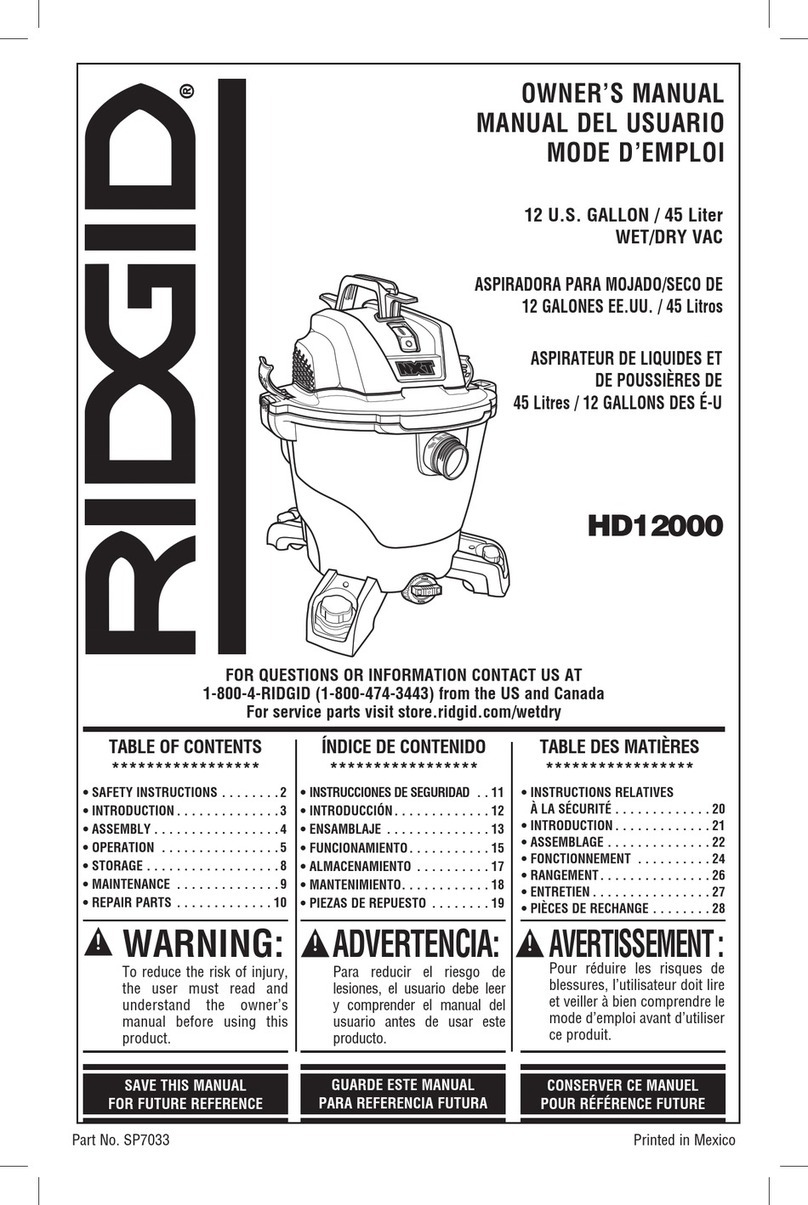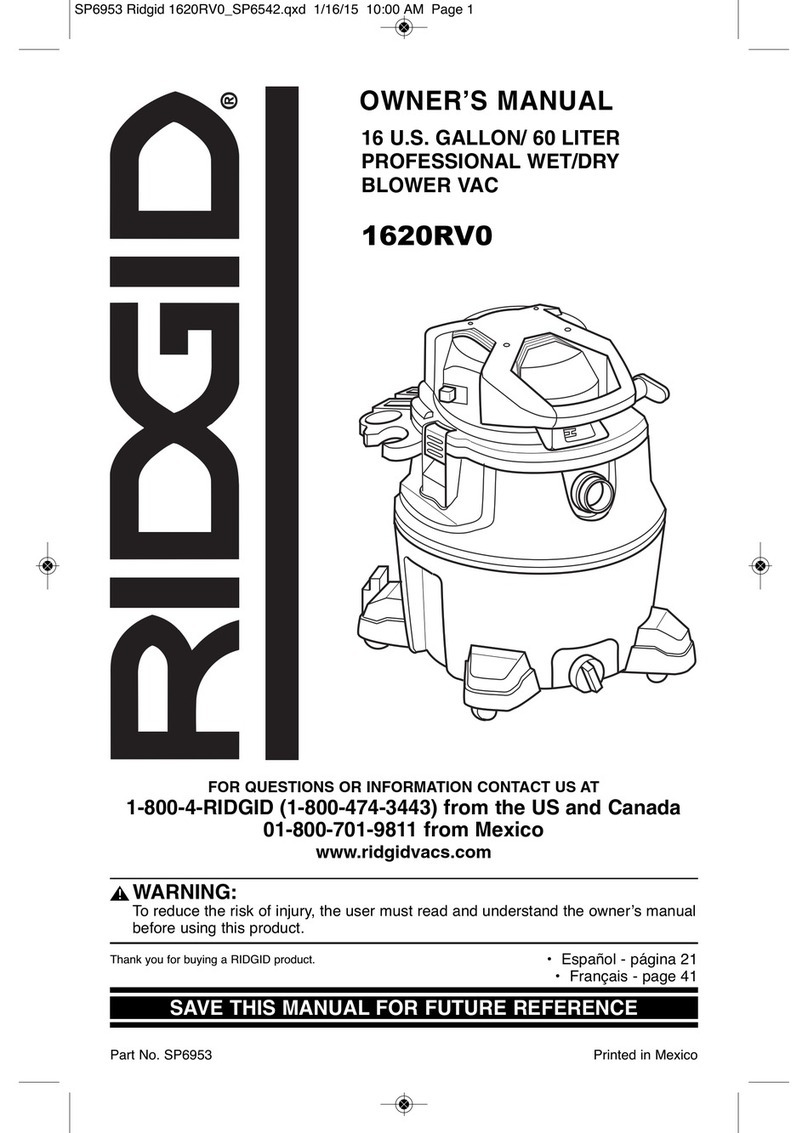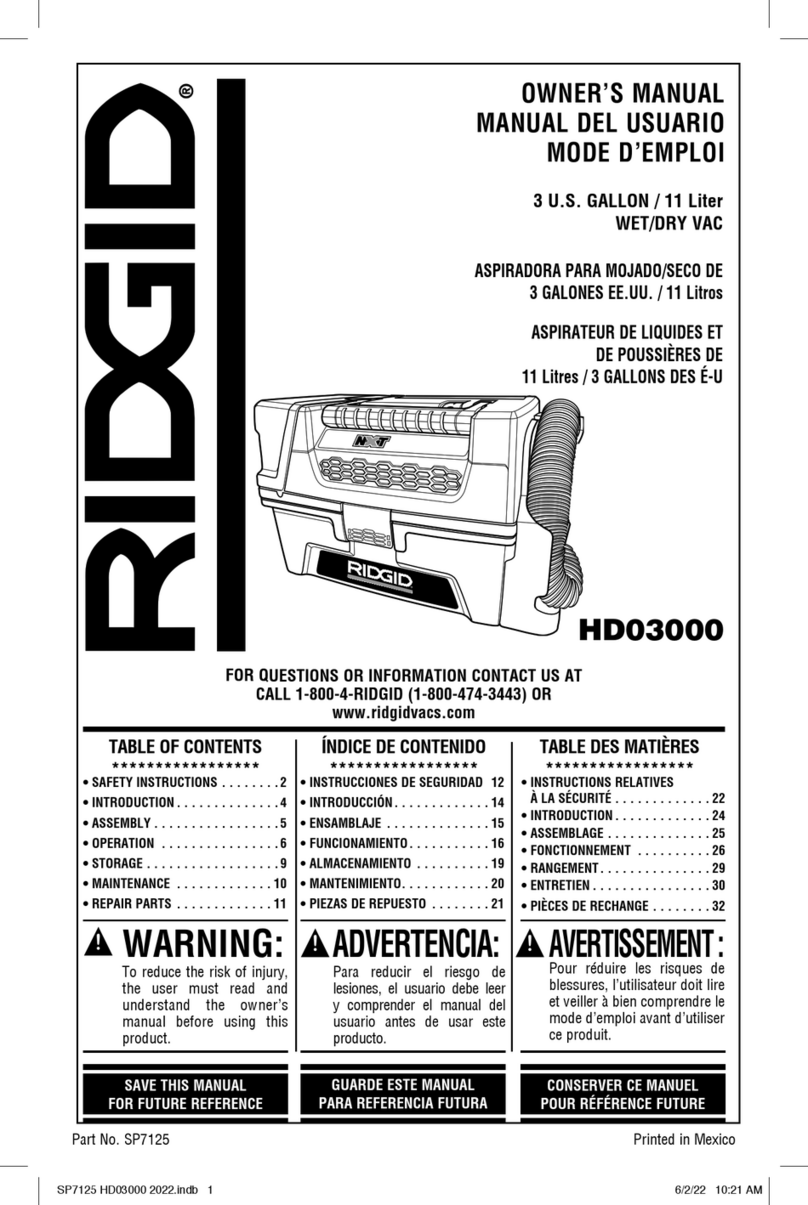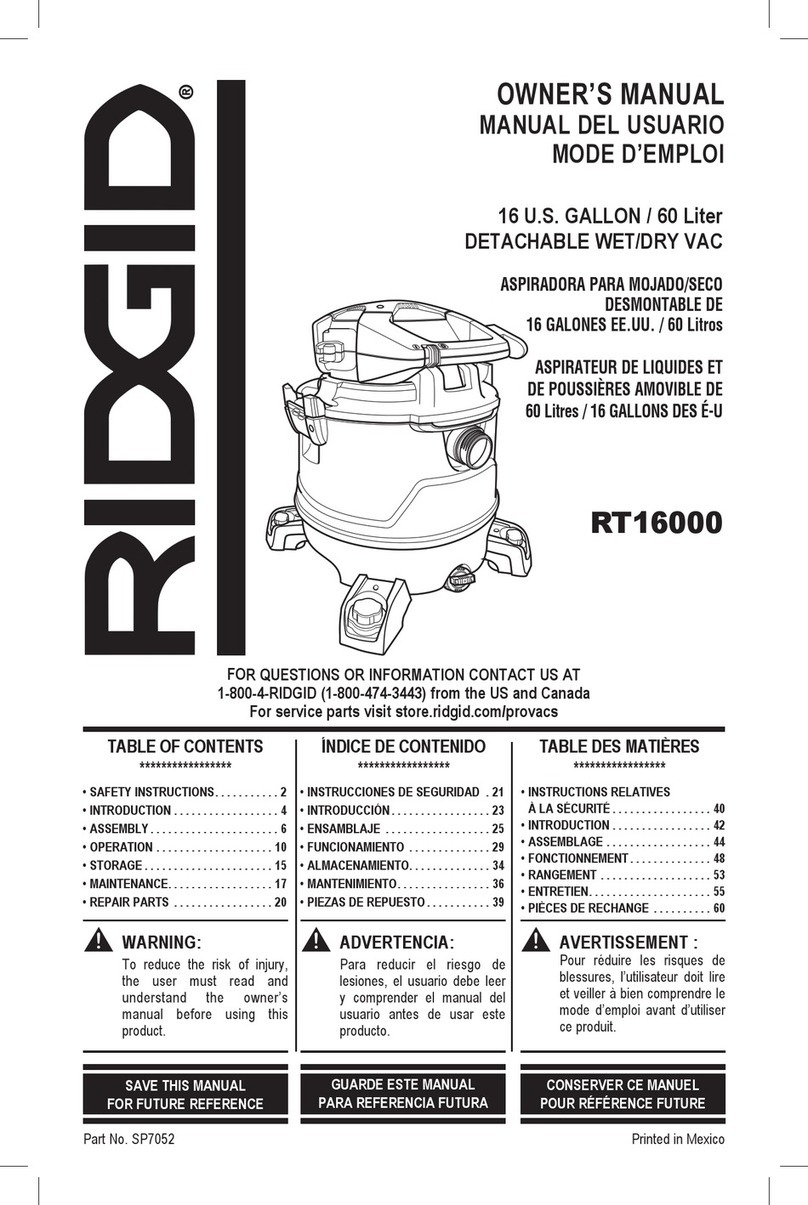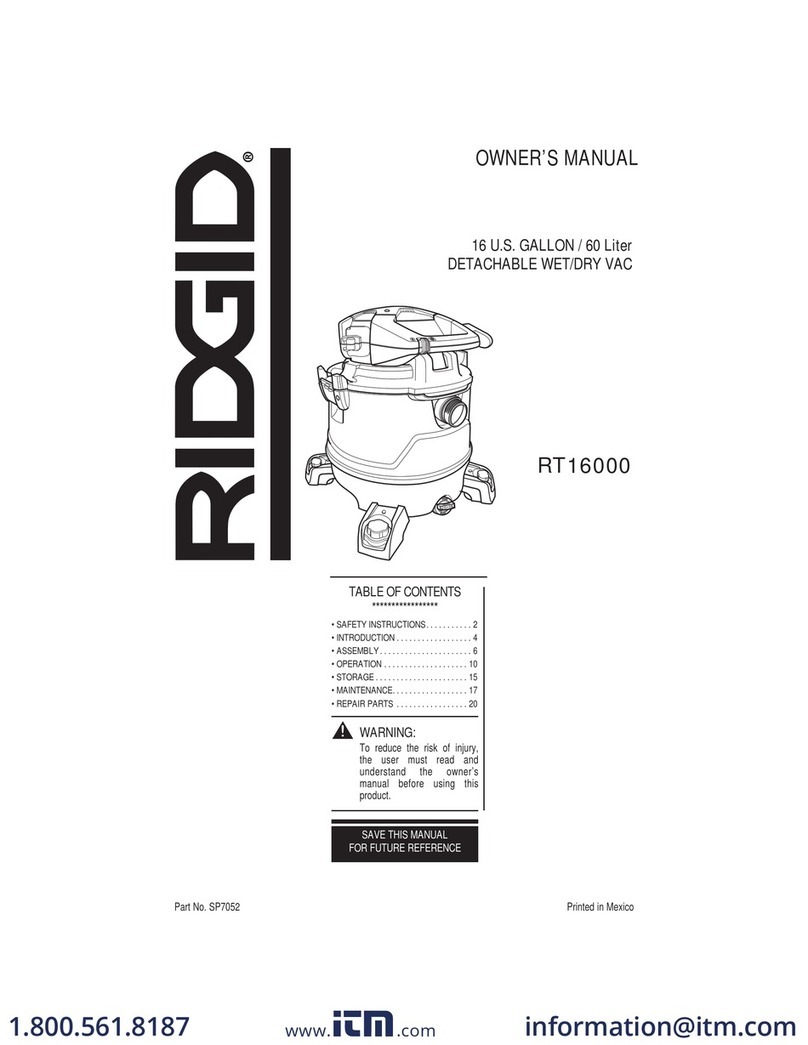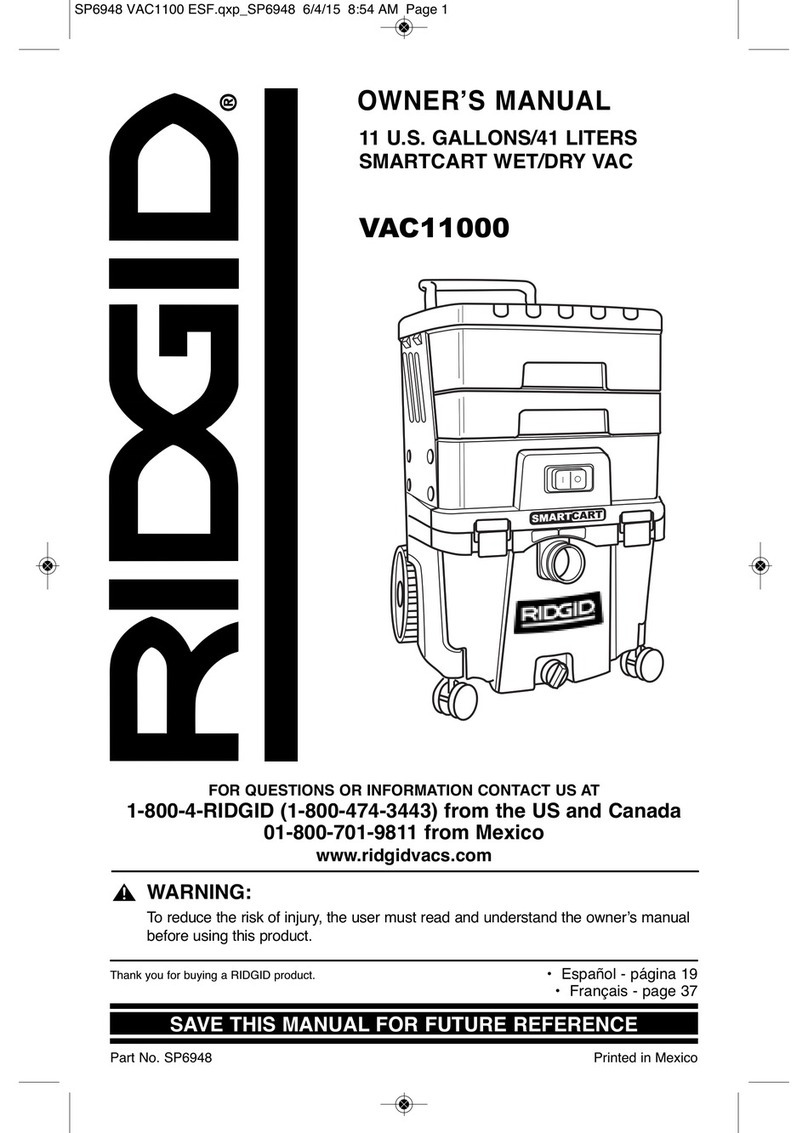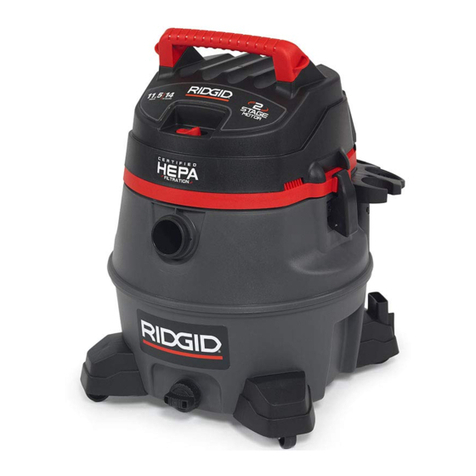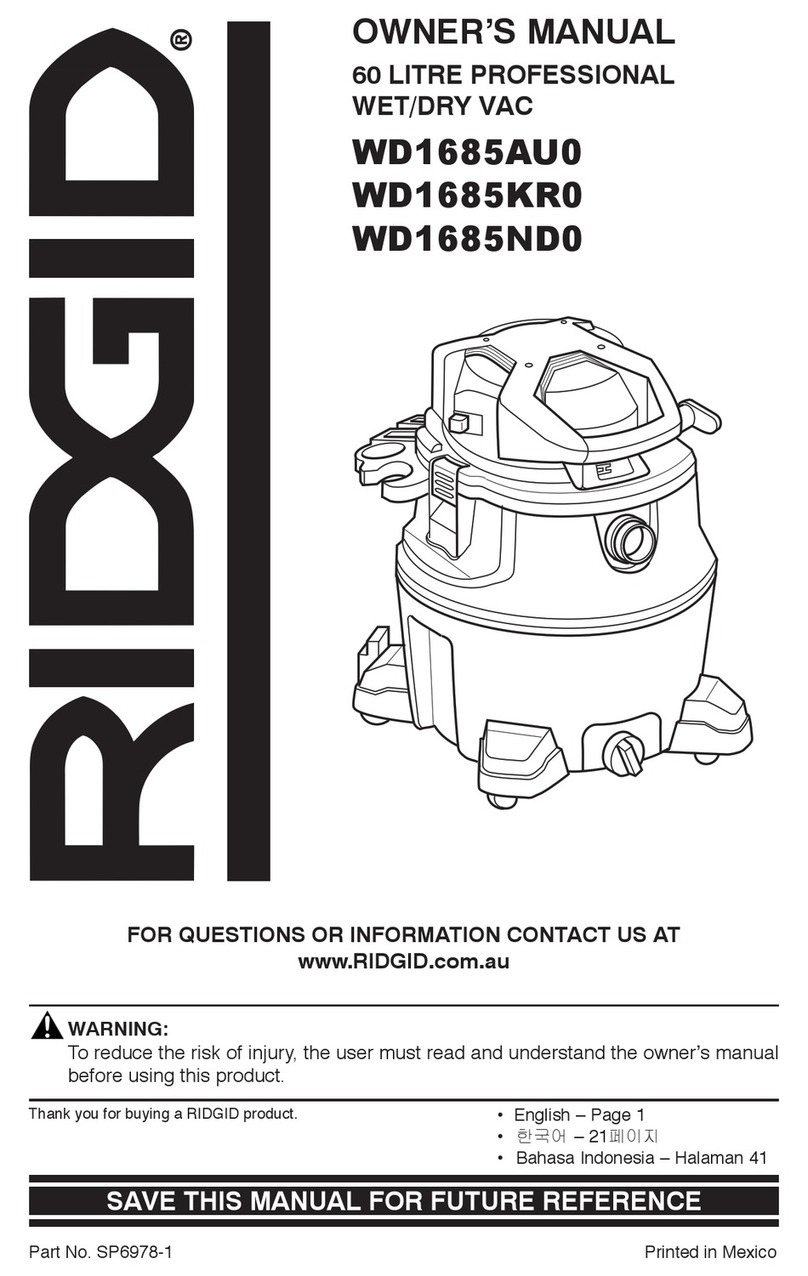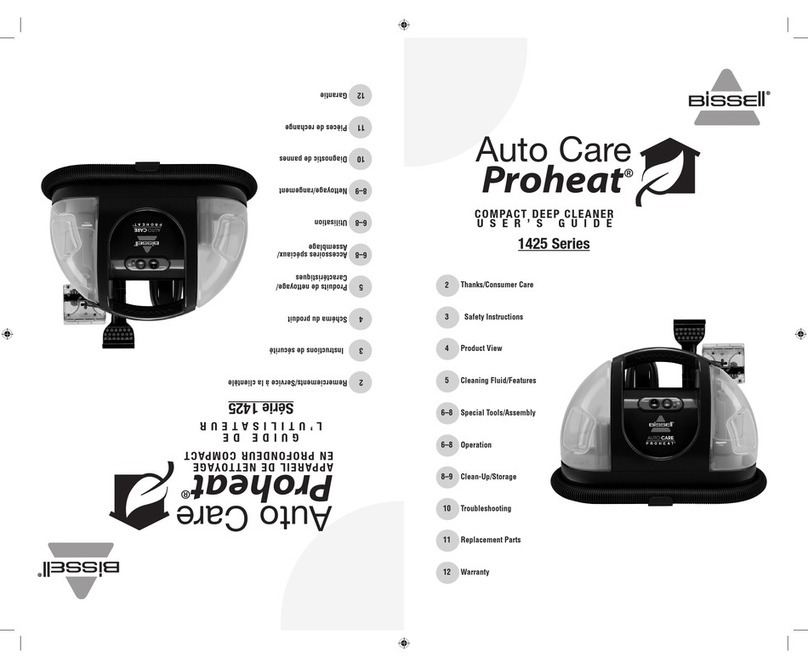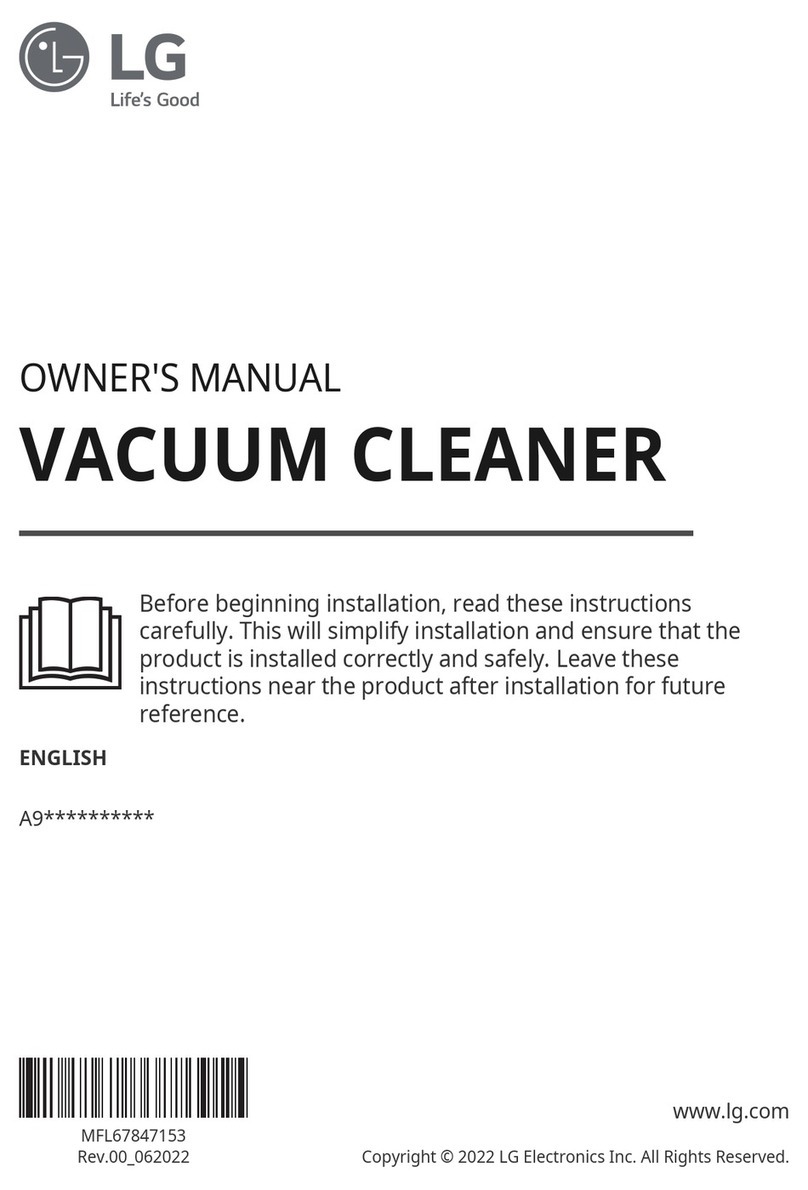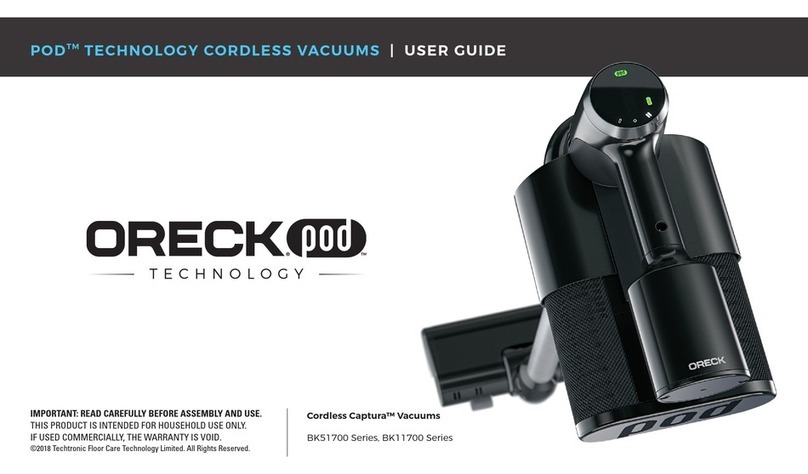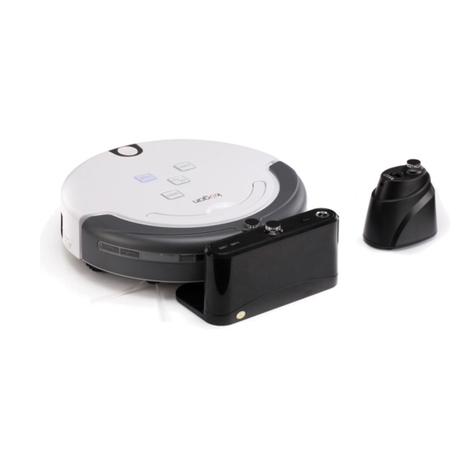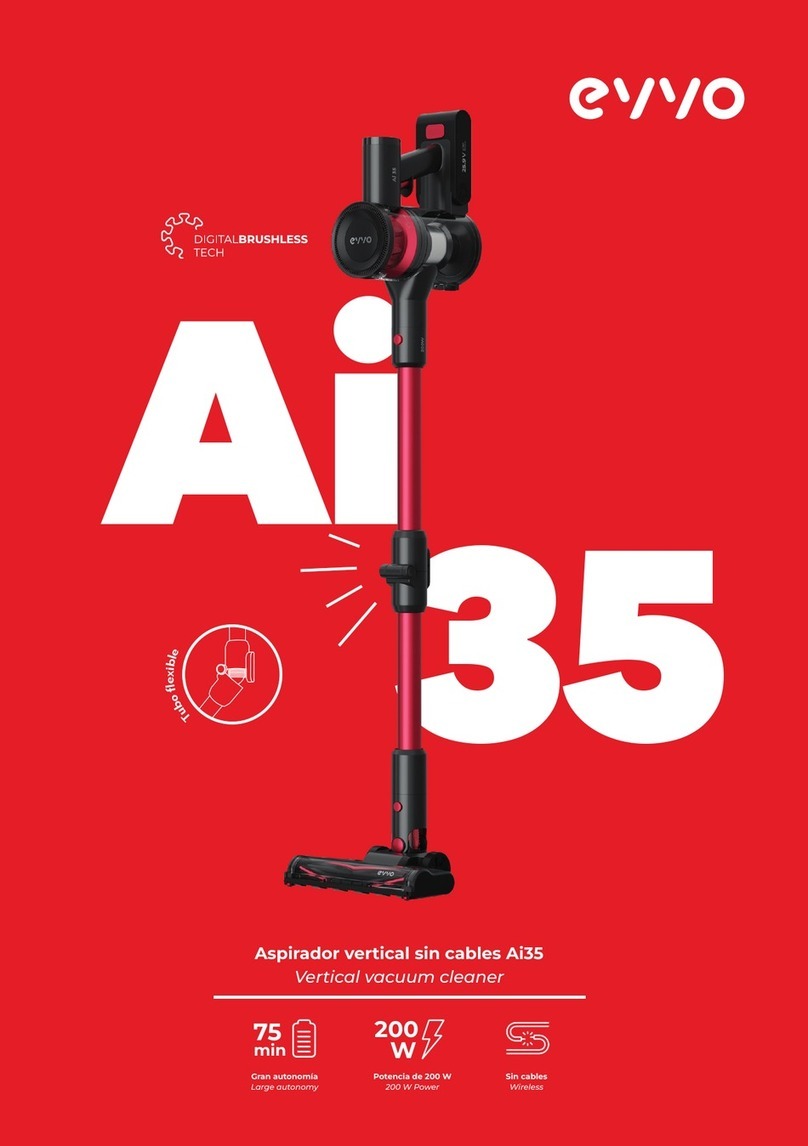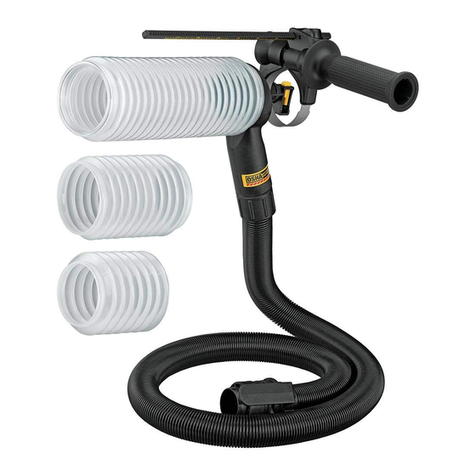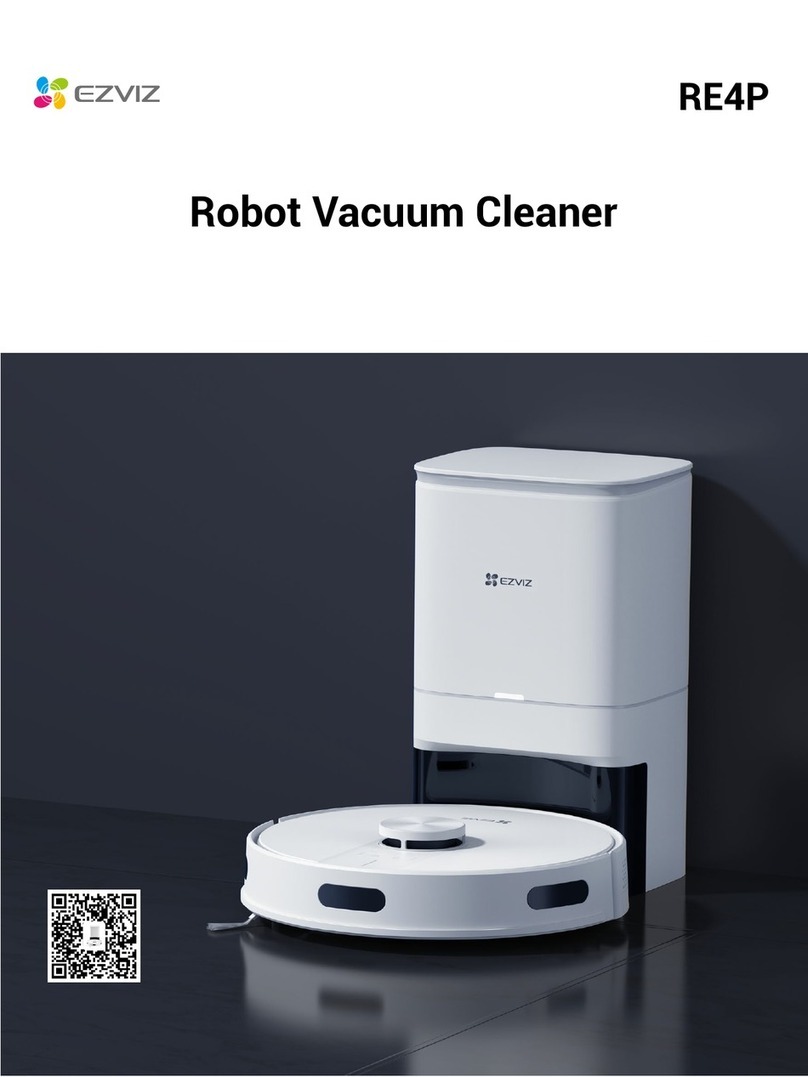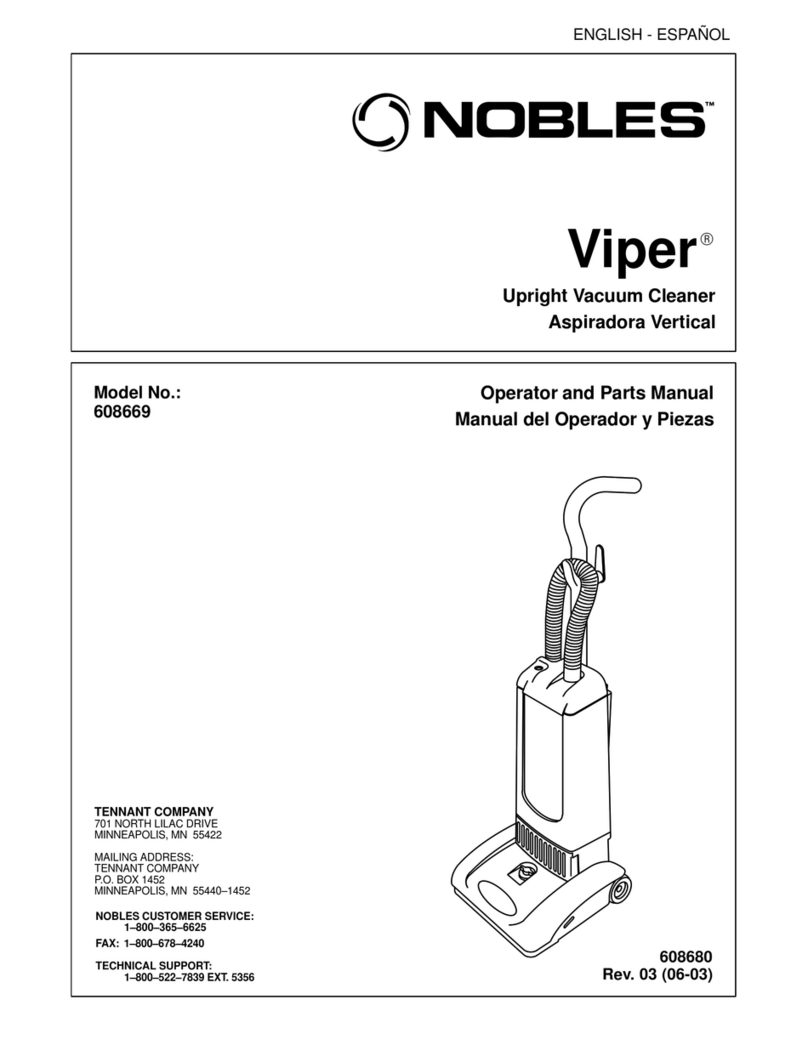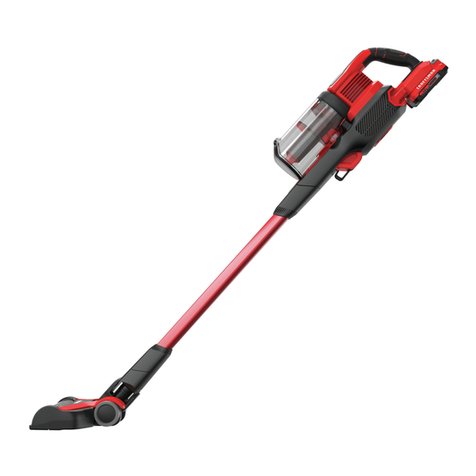
3
impeller may damage the motor or be
exhausted into the air.
• Turn off the Vac before unplugging.
• To reduce the risk of injury from
accidental start-up, unplug power cord
before changing or cleaning the lter.
• Do not unplug by pulling on the cord. To
unplug, grasp the plug, not the cord.
• Do not use with a damaged cord, plug
or other parts. If your Vac is not working
as it should, has missing parts, has
been dropped, damaged, left outdoors
or dropped into water, call customer
service.
• Do not pull or carry by the cord, do
not use cord as a handle, close a door
on cord, or pull the cord around sharp
edges or corners. Do not run the Vac
over the cord. Keep the cord away from
heated surfaces.
• Do not handle the plug, switch or the
Vac with wet hands.
• Use only extension cords that are rated
for outdoor use. Extension cords in poor
condition or that have too small a wire
size can pose re and shock hazards.
To reduce the risk of these hazards,
be sure the cord is in good condition
and that liquid does not contact the
connection. Do not use an extension
cord with conductors smaller than
1.3 mm2. To reduce power loss, do not
use an extension cord with conductors
smaller than 2.1 mm2if the length is
more than 15 m or 3.3 mm2if longer
than 45 m.
• This Wet/Dry Vac is double-insulated,
eliminating the need for a separate
earthing system. Use only identical
replacement parts. Read the instructions
for Servicing Double-Insulated Wet/Dry
Vacs before servicing.
• Do not insert any object into the
ventilation openings. Do not vacuum
with any ventilation openings blocked;
keep free of dust, lint, hair or anything
that may reduce air ow.
• Keep hair, loose clothing, ngers and all
parts of body away from openings and
moving parts.
• To reduce the risk of falls, use extra care
when cleaning on stairs.
• To reduce the risk of back injury or falls,
do not lift a Vac that is heavy with liquid
or debris. Partially empty the Vac by
scooping debris or draining liquid to
make it comfortable to lift.
• To reduce the risk of personal injury
or damage to Vac, use only RIDGID-
recommended accessories.
• When using as a blower:
- Direct air discharge only at work area.
- Do not direct air at bystanders.
- Keep children away when blowing.
- Do not use the blower for any job
except blowing dirt and debris.
- Do not use as a sprayer.
• To reduce the risk of eye injury, wear
safety goggles. The operation of any
utility Vac or blower can result in foreign
objects being blown into the eyes, which
can result in severe eye damage.
Observe the following warnings that appear
on the motor housing of your Vac:
DOUBLE INSULATED EARTHING
NOT REQUIRED. WHEN
SERVICING USE ONLY IDENTICAL
REPLACEMENT PARTS.
CAUTION:
• To reduce the risk of hearing damage,
wear ear protectors when using for an
extended time or in a noisy area.
• For dusty operations, wear a dust mask.
• Static shocks are common when the
relative humidity of the air is low.
Vacuuming ne debris with your Vac
can deposit static charge on the hose
or Vac. To reduce the frequency of
static shocks in your home or when
using this Vac, add moisture to the air
with a humidier.
WARNING: For your own safety,
read and understand the owner’s
manual. Do not run unattended. Do
not pick up hot ashes, coals, toxic,
inflammable or other hazardous
materials. Do not use around
explosive liquids or vapour.
WARNING: To reduce the risk of
electric shock – do not expose to rain
– store indoors.
SAVE THIS MANUAL
